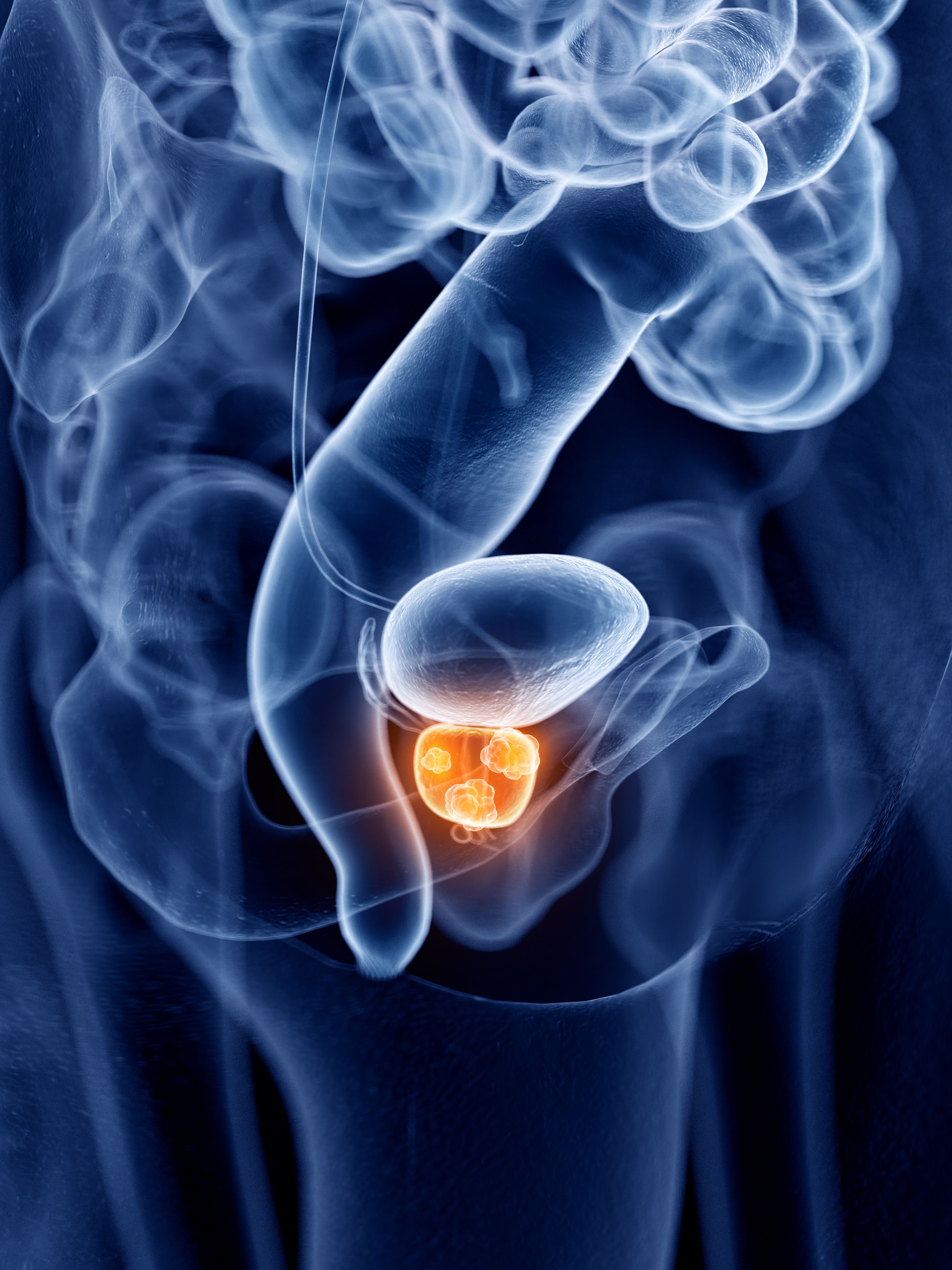Cabazitaxel/Abiraterone Yields PFS Improvement in mCRPC
CHAARTED2 trial showed an improved progression-free survival in patients with metastatic castration-resistant prostate cancer treated with cabazitaxel, abiraterone acetate, and prednisone.
CHAARTED2 trial showed an improved progression-free survival in patients with metastatic castration-resistant prostate cancer treated with cabazitaxel, abiraterone acetate, and prednisone.

A significant reduction in disease progression or death was noted when cabazitaxel (Jevtana), abiraterone acetate (Zytiga), and prednisone were used to treat patients with metastatic castration-resistant prostate cancer (mCRPC) and who have previously been treated with androgen-deprivation therapy (ADT) plus docetaxel for hormone-sensitive prostate cancer (HSPC), according to results from the phase 2 CHAARTED2 trial (EA8153; NCT03419234) presented at the 2024 American Society of Clinical Oncology (ASCO) Annual Meeting.
At a median follow-up of 47.3 months (range, 0-61.2), the median PFS was 14.9 months (95% CI, 9.9-18.6) with the addition of cabazitaxel vs 9.9 months (95% CI, 7.0-12.6) with abiraterone/prednisone alone (HR,0.73; 80% CI, 0.59-0.90; P = .049).
The PFS benefit was greatest in patients who were aged less than 65 years (15.6 vs 9.8 months; P = .08), had an ECOG performance status of 0 (20.9 vs.10.1 months; P = 0.01), had a time to CRPC of <12 months (12.9 vs. 5.1 months; P = .006), and did not have visceral metastases (18.1 vs. 10.1 months; P = .01).
The time to PSA progression (TTPP) was longer in the cabazitaxel arm at 10 months (95% CI, 8.5-13.5) compared with 6.1 months (95% CI, 4.4-8) in patients receiving abiraterone/prednisone alone (P = .002). The median change in PSA from baseline was -87.5% in the combination arm vs -65.9% in the control arm (P = .003)
Of note, there was no difference in median overall survival (OS) between the 2 treatment arms at 25.0 vs 26.9 months in the cabazitaxel vs control arms, respectively (P = .67); however, the study was not powered for an OS comparison.
“Cabazitaxel combined with abiraterone significantly prolonged PFS, improved PSA response, and delayed TTPP compared to abiraterone alone in patients previously treated with docetaxel for metastatic CSPC,” said Christos Kyriakopoulos, MD, an associate professor and medical oncologist in the Division of Hematology, Medical Oncology and Palliative Care at the University of Wisconsin Carbone Cancer Center, Madison, WI.
Despite the positive trial results, however, Kyriakopoulos noted in his ASCO presentation that, “The changes in the treatment landscape with the introduction of doublet and triplet therapies in metastatic CSPC limit the applicability of these results in general practice.”
Overall, the open-label CHAARTED2 trial included 223 patients with metastatic CRPC who had previously received ADT plus docetaxel for HSPC. Patients were randomized in a 1:1 ratio to oral abiraterone (1000 mg/daily) plus 5 mg of oral prednisone twice daily either alone (n = 112) or in combination with cabazitaxel (25 mg/m2 IV every 21 days; n = 112) for a maximum of 6 cycles. Patients were not eligible to enroll if they had any prior treatment for CRPC, an ECOG performance status >2, or grade ≥2 peripheral neuropathy at baseline.
Patient characteristics were well balanced between the 2 study arms. Overall, the median patient age was 64 years (range, 41-80) and the median baseline PSA was 13.3 ng/mL (range, 0.8-1020.4). ECOG performance scores were 0 (58.3%), 1(39%), and 2 (2.7%). That majority of patients (83.1%) had a Gleason score of 8-10, 13.1% had a Gleason score of 7, and 3.8% had a Gleason score <7.Over three-fourths (78.2%) of patients were White, 19.9% were African American, and the rest of patients were other/unknown.
The primary end point was PFS, which the study design defined as the time between patient randomization and radiographic progression, symptomatic deterioration necessitating discontinuation of treatment, or death. Important secondary end points included OS, TTPP, and safety.
Regarding safety, the incidence of grade ≥3 adverse events was higher in the cabazitaxel arm. Grade 3 anemia (6.4% vs 0.9%) and fatigue (5.5% vs 1.9%) were higher in the cabazitaxel arm. Grade 3 hypertension occurred in 10.1% of the cabazitaxel arm and 11.1% of the abiraterone alone arm. Also in the cabazitaxel arm, there were 11 cases of grade 3/4 decreased neutrophil count and 9 cases of decreased white cell count, compared with 0 cases of either in the abiraterone alone arm.
References
Kyriakopoulos C, Chen Y-H,Jeraj R, et al. Cabazitaxel with abiraterone versus abiraterone alone randomized trial for extensive disease following docetaxel: The CHAARTED2 trial of the ECOG-ACRIN Cancer Research Group (EA8153). J Clin Oncol. 2024;42(suppl 17; abstr LBA5000). doi: 10.1200/JCO.2024.42.17_suppl.LBA5000